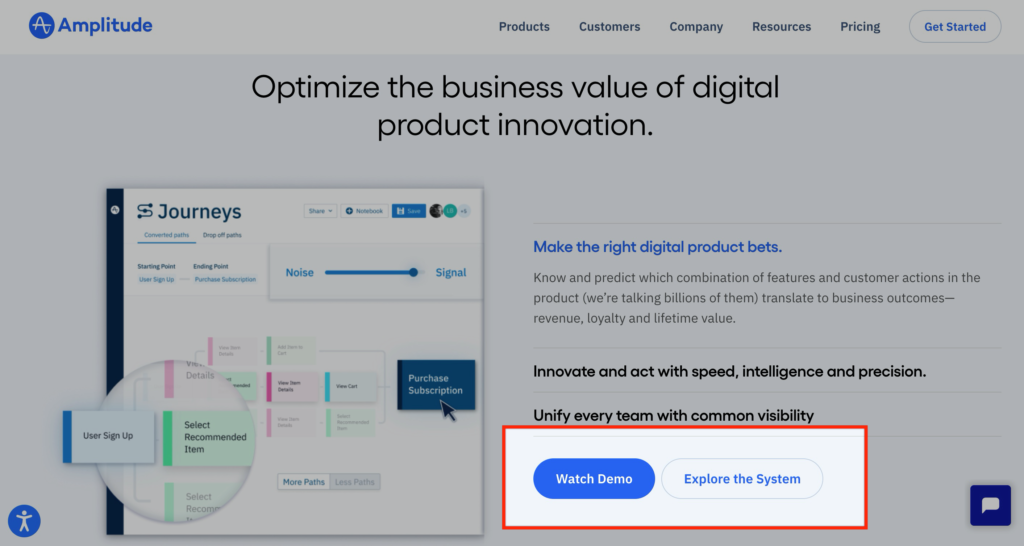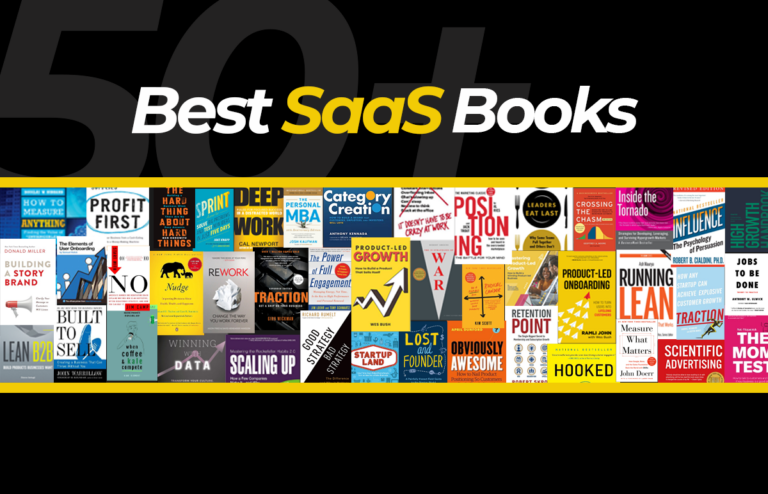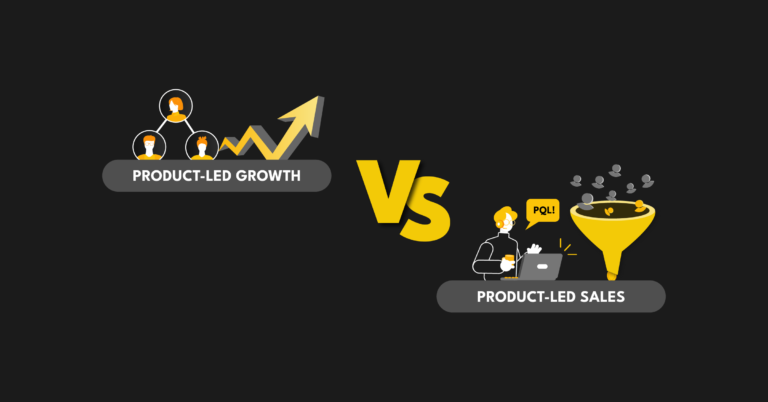For many SaaS companies, your product IS your brand. The experience you give to customers with your product is what they are buying from you. You’re not just selling a product, you’re selling a feeling, an emotion, and an experience.
So if product is the "new marketing," how does this impact how you should approach product-led marketing in your company?
This is just one of the questions we’ll explore in this post.
We also dive into:
- How you should think about the customer experience.
- North Star metrics for product-led growth companies.
- How to use personalization in copywriting.
- Must-have skills in a product-led company.
- How to build customer empathy.
Let's get started.
But first, why product is the new marketing
The future of marketing is constantly changing, especially for SaaS.
What many SaaS companies fail to understand is that they must evolve alongside their consumers. The historical marketing methods don’t have the same impact today, mainly because they are not seen as authentic representations of a brand, company, or product.
The key to successful product-led marketing is authenticity. Analyst reports don’t convince customers to buy from you. Customers buy products that they love using. They crave a top-notch product experience.
So, communicate with customers like they’re close friends (not like you're a product manager or marketer). Don’t talk to them like they’re a distant relative. Engage with your customers and share your most authentic stories. Remember that customers keep using products they love and if this is how people are buying, you need to evolve your marketing strategy to reflect this.
You must do everything you can to remove the friction in the buying process. Make this step your top priority and you’ll find it much easier to help customers see the value of the product as early and as easily as possible.
How you should think about the customer experience
Onboarding starts with the very first marketing asset a customer sees about your product. It’s the very first promise and yet, a lot of companies don’t think about the customer experience in this way. They're worried about other parts of the product launch.
Customers don’t think about your company in the same way that you do. You may view it as an integral web of internal departments and functions from sales to marketing, product development to customer services, and so on. But your customer thinks about your product and your company as one service.
This means that every touchpoint with your company, whether it’s via a marketing asset, social media post, a conversation they had with a member of your sales team – it all ties into the same overall experience for the customer.
Making sure that your teams are on the same page is very important. The last thing you want is to have one team that has absolutely no idea what the other team is doing.
North Star metrics for product-led companies
Your "North Star" metrics must have three important criteria:
1. Metrics should represent customer value
2. Your north star metric cannot be revenue
3. It should represent your strategy at the time
Being clear on what the good North Star metrics are for your product-led company is so important, which is why I recommend you read Amplitude’s book – The North Star Playbook: The Guide to discovering your product’s North Star.
How to monitor the success of your product-led marketing campaigns
Being able to monitor the success of your campaigns is very important. When done right, you can use this research to discover just how successful different product-led marketing campaigns are at attracting and retaining customers.
You can monitor the success of your campaigns in many different ways. The key is to track the progress and the results consistently. Collaborating with various departments within the company is a great way to get even more data on the various marketing campaigns your company has launched.
Monitoring your product-led marketing campaigns can help you map out customer experience more accurately. Something as simple as a classic A/B test can help you learn things like whether one method had better retention than the other.
How to use personalization in copywriting
Amplitude is a product intelligence company that helps customers use data to build amazing product experiences that convert and retain customers. Customer engagement is what it's all about.
They use carefully placed and strategically designed call-to-actions (CTAs) on their site: Watch Demo and Explore The System.

These types of CTAs are a powerful way to approach product-led growth.
Another example is someone who has visited the site multiple times and hasn’t clicked on any of the CTA’s. Clearly, this person is not fully convinced. So, a CTA that might appeal to them more could be the chance to talk to a member of the team or attend a workshop.
Personalization of your CTA based on what stage of the journey the customer is at is a great way to attract and retain customers.
Here are some more tips to help you craft the perfect CTA to assist with product-led growth:
- Make sure your CTA causes the least amount of friction.
- Use simple language and ask them to take action easily – don’t over complicate things.
- Give them value as quickly as possible.
- Treat your marketing assets as products. Design product-led marketing assets that have a job that also helps the customer and provides value.
- Have a clear understanding of your target audience.
Must-have skills in a product-led company
If you want to be a sought-after marketer in a product-led company, there are some vital skills you need to build. These skills will help you to become a valuable asset to an organization.
- You must have good customer empathy and be able to place yourself in your customer’s shoes when making every decision related to your product and product-led marketing
- You must craft your product-led marketing strategy around the customer
- You need a compelling story that is engaging and resonates with your audience
- Analytical skills are vital. You’ll often need to take a scientific approach towards product-led marketing to create something that’s truly unique and scalable
Another crucial factor to take into consideration is how well you and other members of your team know the product. You must live and breathe the product you sell. Become the expert and understand every feature, why it matters, and what value customers get from the product.
How to build customer empathy
One of the most important skills you need is customer empathy.
So, how can you build customer empathy within your team?
A great way to build the team’s customer empathy is to have them participate in customer support. An hour here or there is all it takes to gain a deeper understanding of your customers, their questions, concerns, pain points, and so on.
You can also build customer empathy by asking questions. Carry out a survey, send an email, post a poll on social media, etc.
Another method is to invite prospects and customers to join your workshops. From this, you can find out what they find the most helpful, what they want to focus on, and what their pain points are.
I hope you found this post helpful and you come away with a deeper understanding of product-led marketing and what you can do to craft effective and engaging marketing assets that provide real value to your customers!












